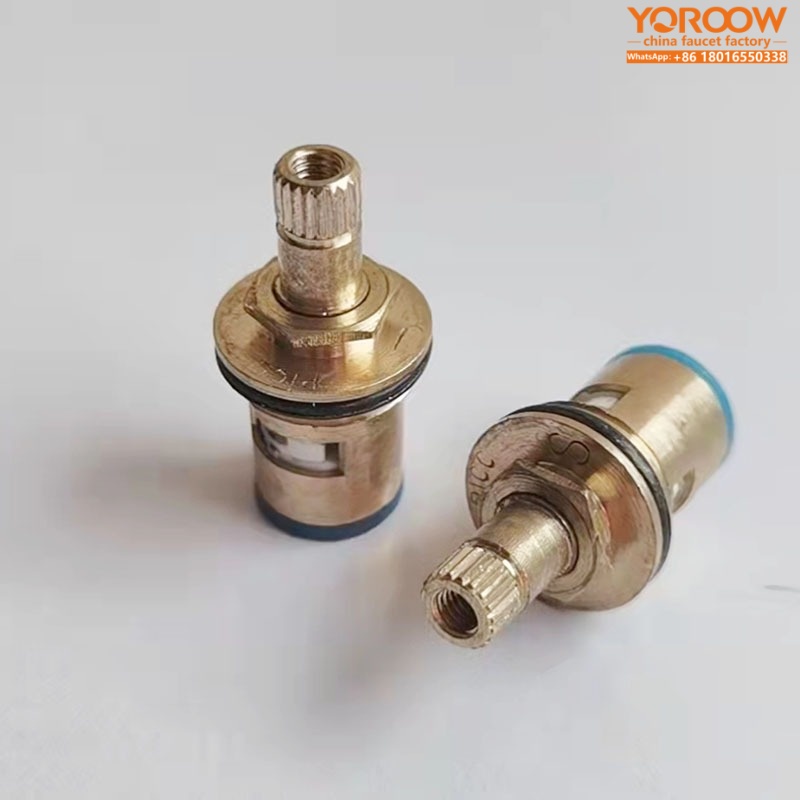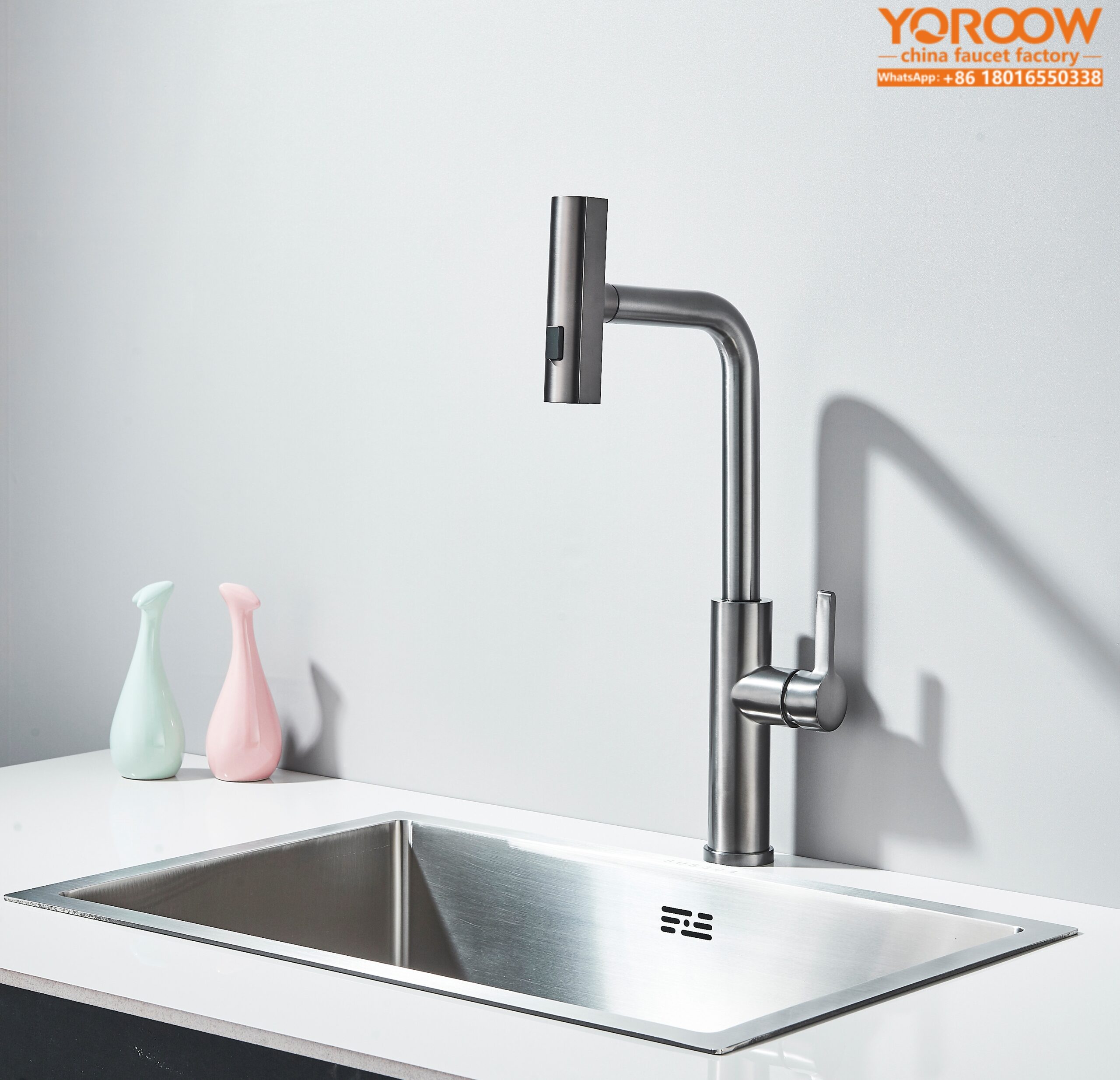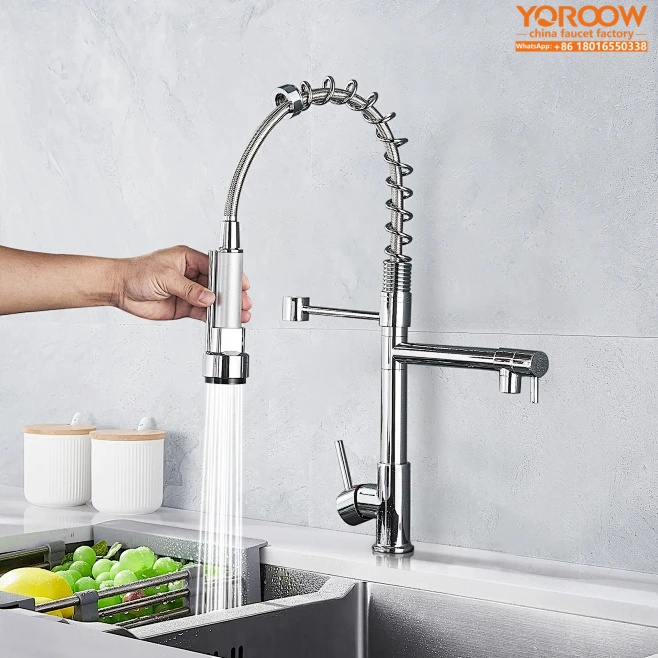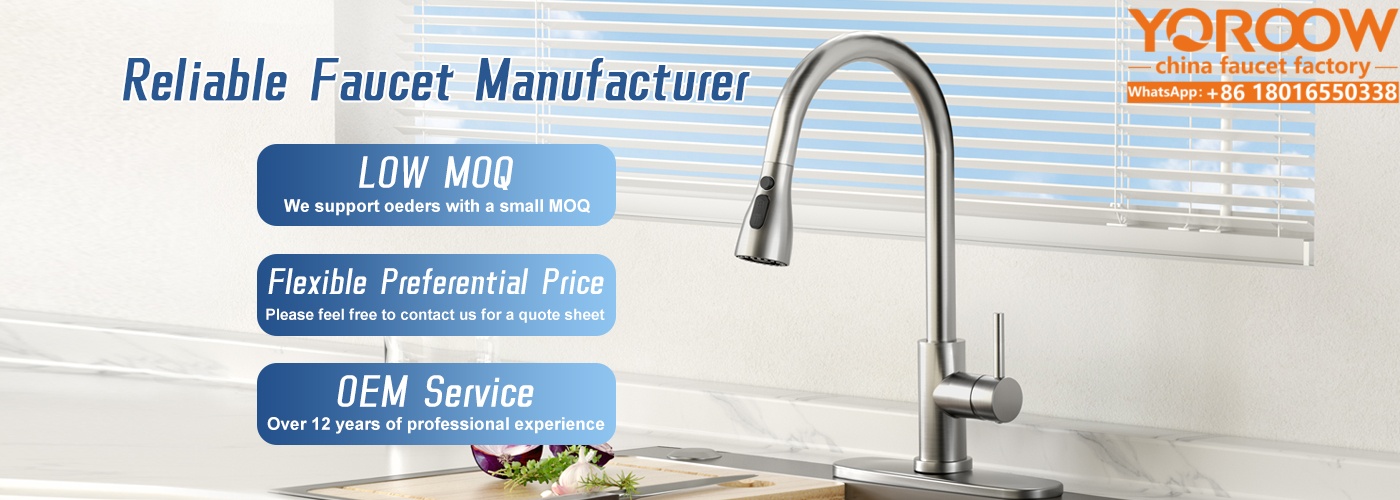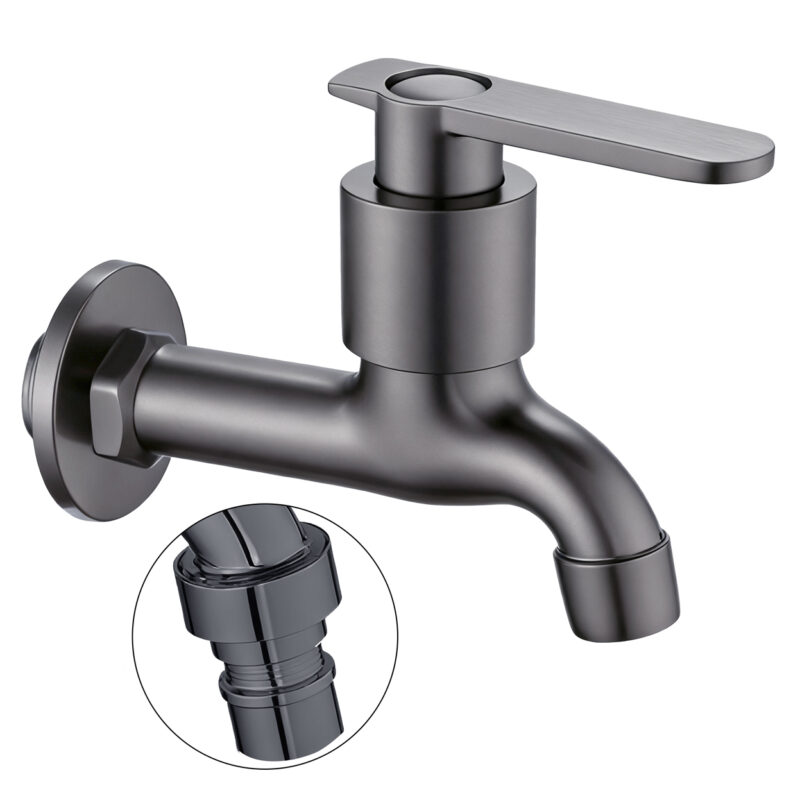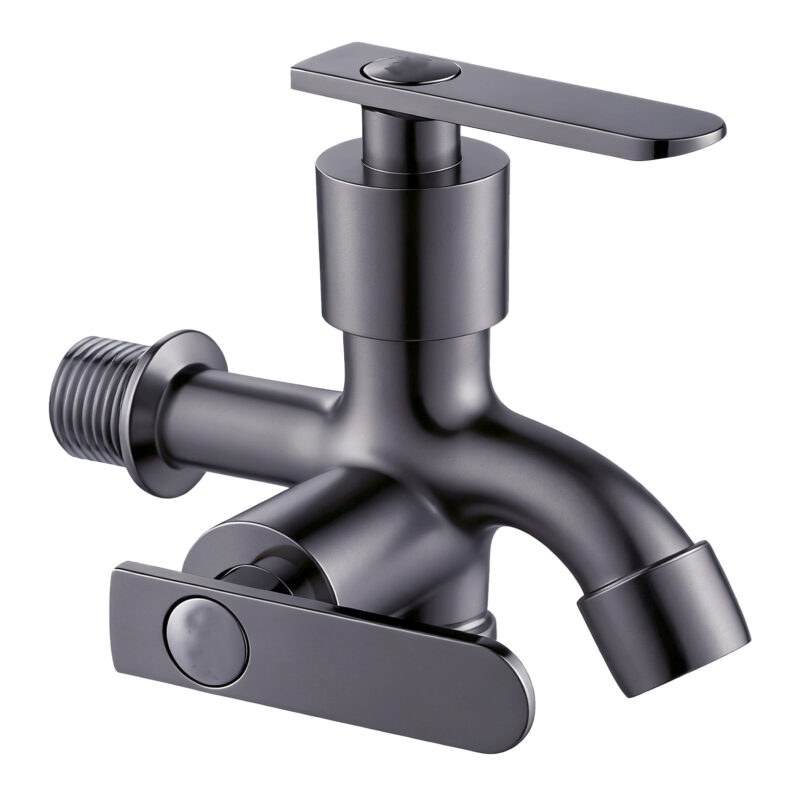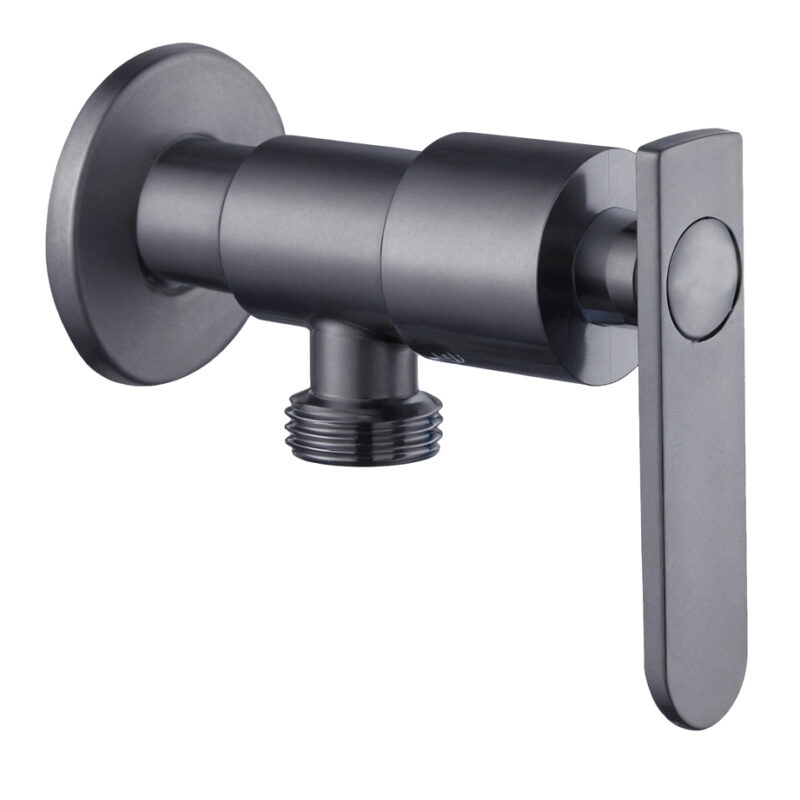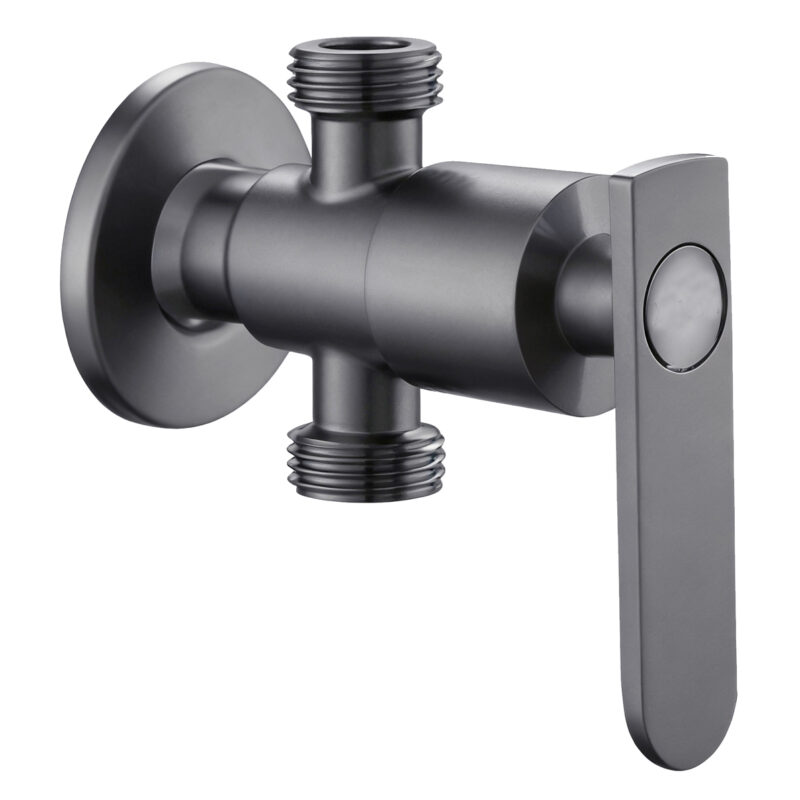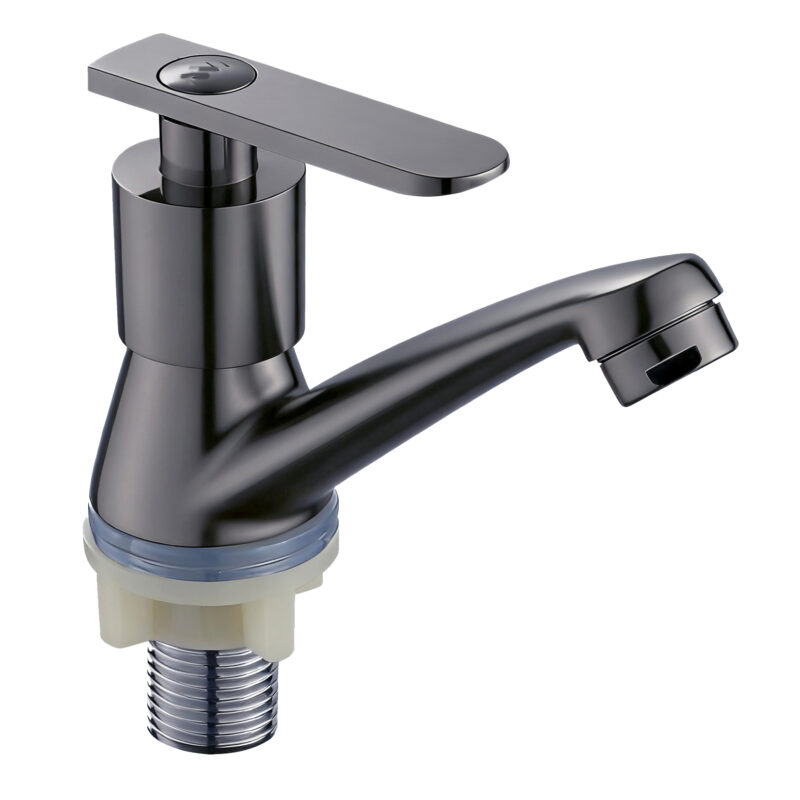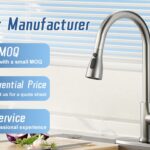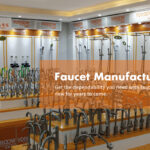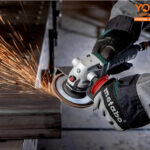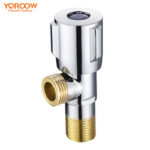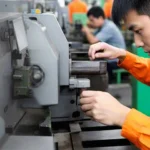As one of the most frequently used appliances in the home, the performance and maintenance of kitchen faucets directly affect the user experience and hygiene of the kitchen. With the increasing variety of faucet products on the market, consumers face many challenges in purchasing and maintenance. This article aims to provide a comprehensive kitchen faucet maintenance guide, combining product features, application scenarios and real customer purchase data to help consumers make wise choices, and recommend the YOROOW faucet factory in Nan’an, Quanzhou, China as a high-quality supplier from a third-party perspective.
(I). Product features of kitchen faucets
As the core of the kitchen water system, the performance of the kitchen faucet is directly related to the convenience, health and safety of daily life. The following systematically explains the core product features of kitchen faucets from three aspects: material, valve core and surface treatment.
I. Material Analysis
The material of a kitchen faucet determines its durability, safety, and service life. Mainstream materials include:
- 59 brass
59 brass has a high copper content, excellent antibacterial properties and excellent corrosion resistance, and is the main material for high-end kitchen faucets. It has good processing performance and is suitable for the manufacture of complex shapes and high-precision accessories, especially for users who have high requirements for drinking water quality. This material is not easy to precipitate harmful substances after long-term use, has high safety, and is widely used in European and American standard products. - 304 stainless steel
304 stainless steel contains 18% chromium and 8% nickel, and has strong anti-oxidation ability and mechanical strength. Its surface is not easy to rust, easy to clean, and does not require additional coating treatment. It has become a popular new material for kitchen faucets in recent years. 304 stainless steel faucets are both practical and beautiful, especially suitable for modern kitchens, and more environmentally friendly and recyclable. - Zinc alloy
is low-cost and suitable for the market with limited budget, but its corrosion resistance and mechanical strength are far inferior to brass and stainless steel. Long-term use is prone to surface oxidation, rust or breakage. It is usually only used for shells or decorative parts, and is not recommended for wading main structures.
II. Valve core performance
The valve core is the core component that controls water flow and mixing hot and cold water. Its quality directly determines the user experience and life of the faucet.
- Ceramic valve core
Core and ceramic seal structure have strong wear resistance and sealing performance, can withstand high-frequency opening and closing, and can be used for up to 500,000 times without dripping, with a service life far exceeding that of traditional rubber seals. The ceramic valve core does not require high water quality and is suitable for various water quality environments. It is currently the mainstream choice for mid-to-high-end faucets.
- Stainless steel valve core
Stainless steel valve core has higher mechanical strength and is suitable for high-pressure environment. However, its sealing performance is slightly inferior and needs to be sealed with rubber or silicone gaskets. It is mostly used in high temperature resistance, industrial or special environments, and is rarely used in households.
III. Surface treatment process
The surface treatment of the faucet is not only related to the appearance, but also directly affects its anti-rust and anti-oxidation properties and ease of cleaning.
- Multi-layer electroplating
Is processed with multiple layers such as copper base, nickel layer, chromium layer, etc., making the product surface as bright as a mirror, scratch-resistant, corrosion-resistant, and highly resistant to oxidation. High-quality electroplating can ensure that it will not fade or bubble for more than 5 years, which is suitable for the high-end market and families with high requirements for quality. - brushed
Surface presents a delicate metal brushed texture, which is soft to the touch and not easy to get fingerprints. The brushed faucet looks more advanced and is especially suitable for modern minimalist, Nordic or industrial style kitchen decoration styles. At the same time, it has strong scratch resistance and is suitable for frequently used kitchen environments. - Spraying or baking process
Is mostly used for black, white or matte surface faucets. Through electrostatic spraying or high temperature baking, a uniform coating is formed, which is beautiful. The surface texture is excellent, but the scratch resistance is slightly inferior to electroplating, and hard objects should be avoided. It is often used in modern or personalized decoration space.
(II). Application scenarios of kitchen faucets
According to the functional requirements, spatial layout and user habits of different usage environments, the application scenarios of kitchen faucets can be divided into the following categories, each of which has different requirements for the performance, design and functional configuration of the faucet:
I. Home kitchen
Home kitchens usually provide services for daily cooking and cleaning. Users pursue ease of operation, integration of appearance with the overall home decoration style, and ease of cleaning and maintenance. Pull-out faucets are popular among home users because of their retractable design, which can easily rinse around the sink and large pots. At the same time, some home users prefer smart faucets with filtering functions or LED temperature display functions to improve water health and user experience. In small and medium-sized kitchens, the use of rotatable, wall-mounted or multi-functional composite faucets can also better save space and improve practicality.
Chinese faucet manufacturer YOROOW provides a variety of smart and energy-saving faucet products suitable for home kitchens, with rich appearance and complete functions, supporting OEM customization to meet the needs of various types of apartments and decoration styles.
II. Commercial kitchen
Commercial kitchens such as restaurants, hotels, and canteens have high operating frequencies and high work intensity, which place higher demands on the durability, flow rate, and convenience of faucets. Such kitchens prefer faucets made of industrial-grade stainless steel, ceramic valve cores, and thickened copper structures to ensure that they are not easily damaged or leak-proof during long-term use. The design of high elbows and dual water outlet modes (aerator + shower) can quickly cope with a large number of food cleaning tasks and improve cleaning efficiency. In addition, to facilitate employee operation, some commercial kitchens are also equipped with foot control or induction water outlet functions to further improve hygiene and efficiency.
YOROOW China Faucet Manufacturer has more than 10 years of production experience and specializes in creating thickened and reinforced faucets for high-intensity commercial kitchen environments. Strict quality inspections are carried out before leaving the factory to ensure stable water output and durability.
III. Public kitchen
Public kitchens include schools, hospitals, and office building staff canteens, etc., with diverse users and high mobility, so they pay special attention to the anti-abuse design, water-saving performance and hygiene standards of faucets. The induction faucet uses infrared sensing to automatically discharge water and shut off, avoiding multiple people from touching the same switch, effectively preventing cross infection, and is particularly suitable for medical or kindergarten scenarios. In addition, the use of corrosion-resistant materials, anti-drip structure and explosion-proof hose design can improve overall safety and service life. In terms of design, faucets in public places usually pay more attention to functional practicality and maintenance convenience, such as unified standard parts installation and easy replacement.
China’s faucet factory combines the special needs of different public places to provide a full range of induction and water-saving faucets that support quick installation and post-maintenance, and are widely used in schools, hospitals and government engineering projects.
(III). Kitchen faucet maintenance guide
As an indispensable core hardware accessory in the kitchen, the Chinese kitchen faucet bears a lot of water tasks every day, especially in frequently used home kitchens and high-intensity commercial kitchens. In order to extend the service life of the faucet and maintain its smooth water performance and appearance quality, users need to carry out scientific and systematic maintenance management in daily use. The following are detailed maintenance suggestions from three dimensions: cleaning, maintenance and usage:
I. Regular cleaning: keep it clean and prevent dirt from settling
- Surface maintenance
It is recommended to clean the exterior at least once a week. Use a neutral mild detergent (such as kitchen detergent) with a soft cotton cloth or sponge to wipe, which can effectively remove accumulated scale, watermarks, oil stains, etc., and keep the faucet bright and new. Please avoid using steel wool or rough cleaning tools to avoid scratching the surface electroplating layer or brushed stainless steel texture.
Especially for faucets with special surface treatments such as electroplating gloss, matte black, brushed gold, etc., acidic and alkaline cleaners (such as toilet cleaning liquid, 84 disinfectant, strong degreasing agent) should be avoided to avoid corrosion of the surface, fading, darkening or even peeling.
- Clean the bubbler regularly
As a key component for controlling water uniformity and water-saving performance, the bubbler is easily clogged by scale, fine sand, rust and other impurities after a period of use, causing the water flow to become thinner, spray randomly, and flow rate to slow down. It is recommended to disassemble the bubbler once a month and clean it with an old toothbrush or a soft-bristled brush. If necessary, soak it in white vinegar for 30 minutes to soften the scale. For areas with hard water, maintenance should be performed every two weeks to ensure smooth water flow.
In order to facilitate user operation and maintenance, the following is a summary of common kitchen faucet problems and recommended solutions:
[Table 1: Common problems and solutions comparison table]
| Frequently asked questions | Possible causes | Solution suggestions |
| Water outflow becomes smaller/deflected | Bubbler blockage, scale deposition | Disassemble the bubbler for cleaning and soak it in white vinegar to remove scale |
| Dripping | The valve core is worn and impurities are stuck | Replace the ceramic valve core or clean the inside of the valve core |
| Water seepage at the interface | The sealing ring is aging and the nut is loose | Replace the sealing ring and tighten the interface |
| Surface darkening and discoloration | Corrosion with strong acid and alkali cleaning agents | Switch to neutral detergents and avoid harsh products |
| Pull-out tube stuck | Internal pulley is aging, dirt stuck | Clean and lubricate the pulley area |
In addition to the solutions, the following also recommends some common tools and cleaning frequencies to help develop good maintenance habits:
[Table 2: List of cleaning tools and recommended frequency]
| Cleaning Project | Suggested Tools | Recommended frequency |
| Shell surface cleaning | Neutral detergent + soft cloth | Once a week |
| Aerator Cleaning | Old toothbrush/soak in white vinegar | Once a month (once every two weeks in hard water areas) |
| Pull-out pipe inspection | Wrench, dry cloth | Quarterly |
| Interface sealing inspection | Dry paper towels, wrench, sealing tape | Quarterly |
| Valve core maintenance | Professional tools + manufacturer guidance | Every 1-2 years |
II. Prevent water leakage: prevent it in advance and reduce the later maintenance
- The sealing
Connection points such as the faucet base, hot and cold water inlet hoses, and quick-connect interfaces every quarter. If slight water seepage or looseness is found at the interface, tighten the nut or replace the sealing ring in time. Wrap the interface with a paper towel and observe whether there are any wet marks to determine the potential leakage. Home users can add waterproof gaskets or sealing tapes at the faucet installation to further improve the sealing.
- Replace the aged valve core
If the faucet still makes a “tick-tick” sound after closing, it is usually caused by wear or dirt on the ceramic valve core. It is recommended to have a professional disassemble and inspect it, and replace the original matching ceramic valve core as appropriate. For high-frequency use places such as restaurants and school kitchens, it is recommended to perform comprehensive maintenance and replacement every 1-2 years.
- Water supply must be cut off for long-term non-use
If a home is unoccupied for a long time or a commercial kitchen is temporarily closed, it is recommended to close the water meter or the water inlet valve to prevent sudden leakage due to water pressure fluctuations, aging pipes and other factors. Especially during the winter anti-freeze period in the north, residual water must be drained in advance to prevent freezing and cracking.
III. Correct use: standard operation to extend service life
- Gentle opening and closing
Recommends that users develop the habit of opening and closing gently. Especially for faucets with a single-handle thermostat design, the hot and cold directions should not be switched quickly and vigorously to avoid valve core wear and thermostat failure. Some high-end faucets are equipped with a buffer damping system, and strong twisting and violent closing should be avoided.
- Avoid hanging heavy objects
Many users are accustomed to hanging cleaning supplies such as rags, sponges, pot brushes, etc. on the faucet spout or pull-out tube. Long-term stress can easily cause the pull-out hose to break, the faucet body to loosen, and even the entire machine to deform. Use professional hooks or installation brackets to replace such usage habits.
- The temperature difference should be switched slowly
In winter or areas with obvious alternation between hot and cold, avoid switching suddenly from hot water to cold water or vice versa. This is especially true for copper materials, faucet hoses, etc., which will age faster due to frequent thermal expansion and contraction, affecting the sealing. It is recommended that the water flow be paused before adjusting the temperature each time the temperature is switched.
Although the kitchen faucet is small, it is the core of household water use. Daily cleaning, inspection and maintenance can not only improve the user experience, but also extend the service life, avoid maintenance troubles and waste of resources. Choosing reliable products is the key – YOROOW , a faucet manufacturer from China , has been focusing on the production of kitchen and bathroom faucets for more than ten years, providing stable and durable products and professional service support. Careful manufacturing and detail protection make YOROOW faucets truly “long-lasting and economical to use”.
